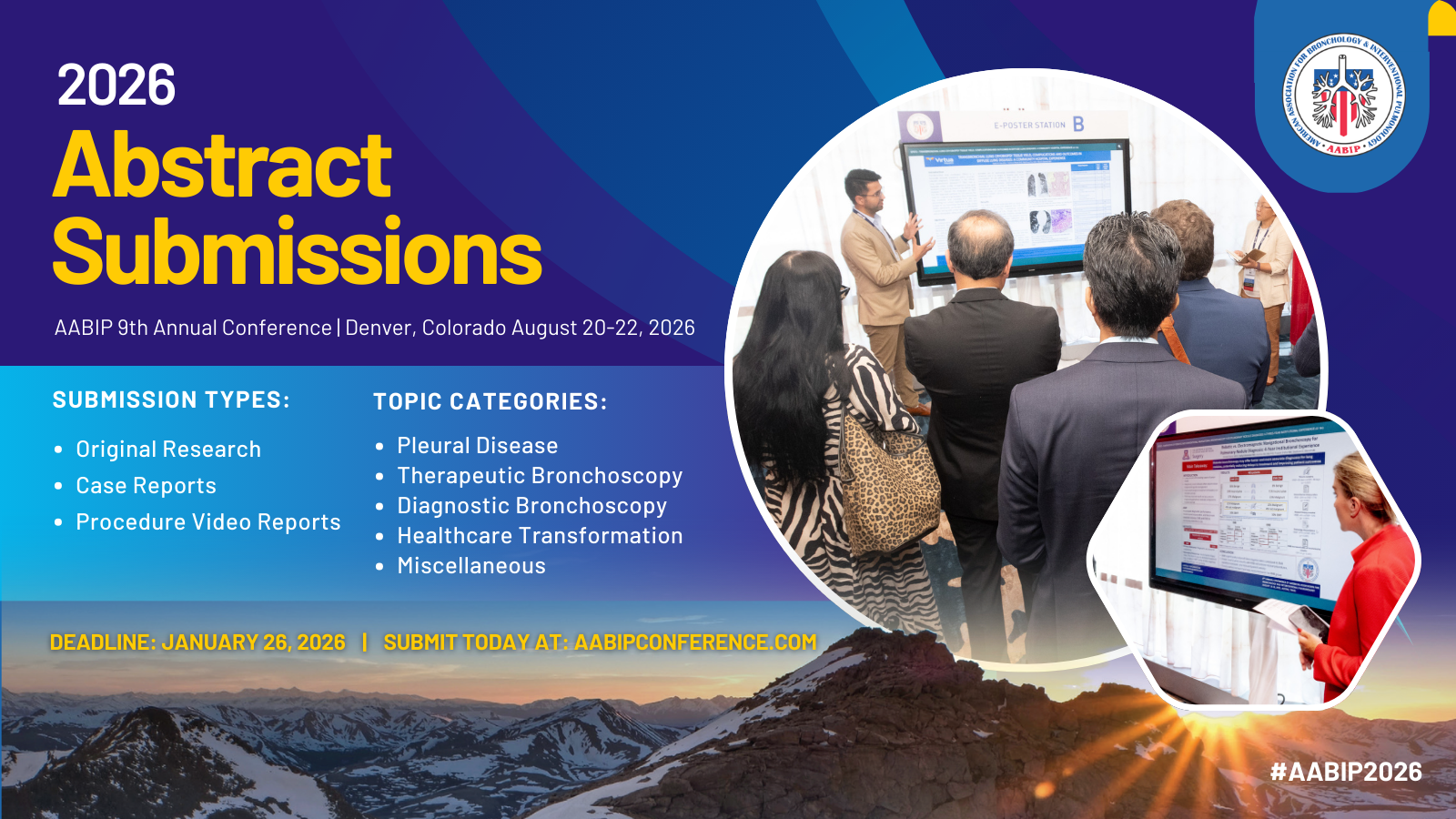IP Fellows Reading List
STENTS AND MONTGOMERY T-TUBES
Mechanical properties of different airway stents
https://www.ncbi.nlm.nih.gov/pubmed/25753590
Clinical Trial
Reference: Ratnovsky A, Regev N, Wald S, Kramer M, Naftali S. Mechanical properties of different airway stents. Med Eng Phys. 2015;37(4):408-15.
Background: This study compared different types of stents (silicone, balloon-dilated metal, self-expanding metal, and covered self-expanding metal) in terms of their mechanical properties and the radial forces they exert on the trachea.
PICO:
Populations:
- Tracheal models were used. A basic geometrical model of the trachea consisted of two main layers: smooth muscle and cartilage.
Intervention:
- Insertion of different types of stents
Comparison:
- Compared to other types of airway stents
Outcome:
- There is a clear correlation between stent diameter (oversizing) and the levels of stress it exerts on the trachea.
- Metal stents covered with less stiff material exert significantly less stress on the trachea, while still maintaining strong contact with it.
Take Home: The use of such stents may reduce formation of mucosa necrosis and fistulas, while still preventing stent migration. Silicone stents produce the lowest levels of stress, which may be due to weak contact between the stent and the trachea and can explain their propensity for migration. Unexpectedly, stents made of the same materials exerted different stresses due to differences in their structure. Stenosis significantly increases stress levels in all stents.
A Prospective Multicenter Trial of a Self-expanding Hybrid Stent in Malignant Airway Obstruction
https://journals.lww.com/bronchology/Fulltext/2008/10000/A_Prospective_Multicenter_Trial_of_a.4.aspx
Landmark Article
Reference: Gildea, Thomas R. MD*; Downie, Gordon MD†; Eapen, Georgie MD‡; Herth, Felix MD§; Jantz, Michael MD∥; Freitag, Lutz MD, A Prospective Multicenter Trial of a Self-expanding Hybrid Stent in Malignant Airway Obstruction. Journal of Bronchology: October 2008 – Volume 15 – Issue 4 – p 221-224
Background: This is a prospective multicenter intention to treat study that evaluated the efficacy and safety of a hybrid stent (AERO stent) for the treatment of malignant airway obstruction in 56 patients at 11 centers between June 2005 and December 2006. This study led to the FDA approval of AERO stent.
PICO:
Populations:
- Age >18 years, with malignant airway obstruction of the major airways (either extrinsic or intrinsic obstruction)
- Predicted life expectancy of >90 days
Intervention:
- Underwent self-expanding hybrid stent placement
Comparison:
Outcome:
- 88% had more than 50% luminal patency improvement
- Improved dyspnea index at 7 days and 30 days after stenting.
- Complication: major complication was migration in 28% of patients
Take Home: This is the largest study to date that showed improvement in luminal patency after stenting of malignant airway obstruction with an acceptable complication rate.
Clinical Success Stenting Distal Bronchi for “Lobar Salvage” in Bronchial Stenosis
https://www.ncbi.nlm.nih.gov/pubmed/28915141
Clinical Trial
Reference: Sethi S, Gildea TR, Almeida FA, Cicenia JC, Machuzak MS. Clinical Success Stenting Distal Bronchi for “Lobar Salvage” in Bronchial Stenosis. J Bronchology Interv Pulmonol. 2018;25(1):9-16.
Background: This is a retrospective study to assess the feasibility, complications, and long-term impact of using 122 iCAST balloon-expandable stents for placement in 38 patients with lobar bronchial stenosis either secondary to malignancy or benign etiologies. These patients were followed for 3.5 years.
PICO:
Populations:
- Mean age 58 years (range, 28 to 76)
- 19 women (50%).
- Inoperable lobar bronchial stenosis
- Mixed benign and malignant causes.
Intervention:
- iCast balloon expandable stent placement
Comparison:
Outcome:
- Symptomatic improvement in quality of life (QoL) questionnaire was observed in 95% of patients (36/38)
- 2 patients who did not have symptomatic improvement
- 76% had radiographic improvement of lobar atelectasis/infiltrates on follow-up chest radiograph.
- 93% (15/16 lung transplant) of these patients showed improvements in their PFTs, with an average improvement in FEV1 of 12.3% (range, 4% to 23%)
- Overall complication rate: 20%
- Stent migration: 10%
- Granulation tissue: 5%
Take Home: Stenting small airways in benign and malignant disease for lobar salvage is safe and effective in improving outcomes with regard to symptoms, radiographic improvement, and pulmonary function tests when related to lobar bronchial stenosis. These stents are not technically difficult to place.
Respiratory infections increase the risk of granulation tissue formation following airway stenting in patients with malignant airway obstruction
https://www.ncbi.nlm.nih.gov/pubmed/22194585
Clinical Trial
Reference: Ost DE, Shah AM, Lei X, et al. Respiratory infections increase the risk of granulation tissue formation following airway stenting in patients with malignant airway obstruction. Chest. 2012;141(6):1473-1481.
Background: Largest series of 172 patients that had 195 airway stents placed for malignant airway obstruction from January 2005 to August 2010. This retrospective cohort study compared the incidence of complications of different airway stents.
PICO:
Populations:
- Age 16-84 years
- Female 79/172
- Primary lung cancer: 115
- Metastatic lung cancer: 80
- Excluded if more than one type of stent was in place at the same time
Intervention:
- Ultraflex stents were used in 118 cases (60%)
- Aero (Merit Endotek) stents in 31 cases (16%)
- Novatech Dumon silicone bronchial and Y-stents (Boston Medical) in 46 cases (24%)
Comparison:
Outcome:
- Aero stents were associated with an increased risk of infection (HR=1.98).
- Dumon silicone tube stents had an increased risk of migration (HR=3.52).
- Silicone stents (HR=3.32) and lower respiratory tract infections (HR=5.69) increased the risk of granulation tissue.
- Lower respiratory tract infections were associated with decreased survival (HR=1.57).
Take Home: This is the largest retrospective study demonstrating the incidence of complications of various airway stents used in patients with malignant airway disease. They found higher respiratory infections in patients with Aero stents, high migration rates with silicone stents and low granulation tissue formation with Ultraflex stents. Stent infection and repetitive motion may be related to the development of granulation tissue.
Stents are associated with increased risk of respiratory infections in patients undergoing airway interventions for malignant airways disease
https://www.ncbi.nlm.nih.gov/pubmed/23471176
Clinical Trial
Reference: Grosu HB, Eapen GA, Morice RC, et al. Stents are associated with increased risk of respiratory infections in patients undergoing airway interventions for malignant airways disease. Chest. 2013;144(2):441-449.
Background: This is a retrospective study reporting the incidence of lower respiratory tract infection in patients who underwent therapeutic bronchoscopy with stent placement for malignant central airway disease.
PICO:
Populations:
- 72 patients with malignant central airway disease, 24 underwent stent placement.
- Mean age 59.4 years
- Combined extrinsic and endoluminal tumor: 50%
- Endoluminal tumor only: 39%
- Extrinsic compression only: 4%
Intervention:
- Stent placement
- Number of stents placed: 29
Comparison:
- Ultraflex: 15 (52%)
- Aero stent: 9 (31%)
- Dumon Stent: 1 (3)
- Dumon Y Stent: 3 (10%)
- Polyflex: 1 (3%)
Outcome:
- Stents were associated with an increased risk of infection (HR=3.76).
- 16% of stent were infected within 30 days of placement.
- The incidence rate of lower respiratory tract infection was 0.0057 infections/per person-day in patients with stents vs 0.0011 without stents.
- Restenosis due to tumor overgrowth was associated with more severe obstruction at baseline (obstruction ≥ 50% vs < 50% HR=13.71).
- 32/72 patients died within 6 months
Take Home: Patients with malignant central airway disease undergoing therapeutic bronchoscopy with stent placement are at an increased risk of developing infections compared to patients undergoing therapeutic bronchoscopy without stent placement.
Complications Following Therapeutic Bronchoscopy for Malignant Central Airway Obstruction: Results of the AQuIRE Registry
https://www.ncbi.nlm.nih.gov/pubmed/25741903
Clinical Trial
Reference: Ost DE, Ernst A, Grosu HB, et al. Complications Following Therapeutic Bronchoscopy for Malignant Central Airway Obstruction: Results of the AQuIRE Registry. Chest. 2015;148(2):450-471.
Background: This was a large multicenter study using results from the AQuIRE Registry that reported the complications following therapeutic bronchoscopy for malignant central airway obstruction.
PICO:
Populations:
- 1,115 patients were included, 725 (65%) had obstruction at only one location
- 227 (20%) had obstruction in two locations
- 119 (11%) had obstruction in three locations
- 35 (3%) had obstruction in four locations
- 8 (1%) had obstruction in five locations.
- Type(s) of obstruction: 1,041 (93%) patients had only one type of obstruction
- 68 (6%) had two types of obstruction
- 6 (1%) had three types of obstruction
Intervention:
- Stent placement (wide variation in stent usage at centers)
Comparison:
Outcome:
- Overall complication rate was 3.9%, but significant variation was found among centers.
- Risk factors for complications were: urgent and emergent procedures, American Society of Anesthesiologists (ASA) score > 3, repeat therapeutic bronchoscopy, and moderate sedation.
- The 30-day mortality was 14.8%; mortality varied among centers.
- Risk factors for 30-day mortality included: Zubrod score > 1, ASA score > 3, intrinsic or mixed obstruction, and stent placement.
Take Home: General anesthesia should be considered when performing therapeutic bronchoscopy for malignant central airway obstruction. Stent placement was associated with an increased 30-day mortality in these patients.
3D printing for airway disease
https://www.ncbi.nlm.nih.gov/pubmed/31650103
Review
Reference: Alraiyes AH, Avasarala SK, Machuzak MS, Gildea TR. 3D printing for airway disease. AME Med J. 2019;4
Summary: With the limitations of commercially available stents, alternative methods of airway stent manufacturing, such as custom 3D stent printing, are being considered. With the right equipment and expertise, 3D printing can allow point-of-care fabrication of customized implants, including airway stents. Very little guidance exists for quality assurance of 3D printed implantable devices. Recently, the FDA has approved patient-specific airway stents developed by a Cleveland Clinic physician.
Update on airway stents
https://www.ncbi.nlm.nih.gov/pubmed/29538079
Review
Reference: Sabath BF, Ost DE. Update on airway stents. Curr Opin Pulm Med. 2018;24(4):343-349.
Summary: Update on airway stents, including patient selection and management.
Airway stents
https://www.ncbi.nlm.nih.gov/pubmed/29707506
Review
Reference: Folch E, Keyes C. Airway stents. Ann Cardiothorac Surg. 2018;7(2):273-283.
Summary: Comprehensive review of stents including: types, complications, management, and outcomes.
Central Airway Obstruction: Benign Strictures, Tracheobronchomalacia, and Malignancy-related Obstruction
https://www.ncbi.nlm.nih.gov/pubmed/26874192
Review
Reference: Murgu SD, Egressy K, Laxmanan B, Doblare G, Ortiz-comino R, Hogarth DK. Central Airway Obstruction: Benign Strictures, Tracheobronchomalacia, and Malignancy-related Obstruction. Chest. 2016;150(2):426-41.
Summary: This is a review for the management of central airway obstruction from a variety of etiologies. It includes fundamental risk stratification and patient management.
Three-dimensional Printing and 3D Slicer: Powerful Tools in Understanding and Treating Structural Lung Disease
https://www.ncbi.nlm.nih.gov/pubmed/26976347
Review
Reference: Cheng GZ, San Jose Estepar R, Folch E, Onieva J, Gangadharan S, Majid A. Three-dimensional Printing and 3D Slicer: Powerful Tools in Understanding and Treating Structural Lung Disease. Chest. 2016;149(5):1136-42.
Summary: A review of the current status of 3D printed airway stents. This includes recent advances in the technology, current limitations/barriers, and recommendations for the future.
Role of Montgomery T-tube stent for laryngotracheal stenosis
https://www.ncbi.nlm.nih.gov/pubmed/24172854
Clinical Trial
Reference: Prasanna Kumar S, Ravikumar A, Senthil K, Somu L, Nazrin MI. Role of Montgomery T-tube stent for laryngotracheal stenosis. Auris Nasus Larynx. 2014;41(2):195-200.
Background: This is a retrospective study of 39 patients with laryngotracheal stenosis managed by Montgomery T-tube stenting for temporary or definitive treatment from 2004-2011. It analyzed the indications, complications and outcomes.
PICO:
Populations:
- 39 patients with laryngotracheal stenosis (LTS) were included
- 32 developed LTS post-endotracheal intubation
- 6 developed LTS post-tracheostomy
- 1 patient had a thyroid malignancy with infiltration into the trachea causing stenosis
Intervention:
- Underwent Montgomery T-tube stenting
Comparison:
Outcome:
- No mortality associated with the procedure or stenting.
- 82% of the patients were successfully decannulated.
- Complications were: crusting within the tube (44%) and granulation at the subglottis (33%).
- Two patients had a complication due to T-tube itself: 1 developed tracheomalacia and 1 had stenosis at both ends of the T-tube
Take Home: Montgomery T-tube stenting has a role in the management of inoperable laryngotracheal stenosis where resection and anastomosis is not feasible. It is easy to introduce and maintain the Montgomery T-tube stent. Complications are minor and can be managed easily. It is safe for long term use.
Outcome and safety of the Montgomery T-tube for laryngotracheal stenosis: a single-center retrospective analysis of 546 cases
https://www.ncbi.nlm.nih.gov/pubmed/25531465
Clinical Trial
Reference: Shi S, Chen D, Li X, et al. Outcome and safety of the Montgomery T-tube for laryngotracheal stenosis: a single-center retrospective analysis of 546 cases. ORL J Otorhinolaryngol Relat Spec. 2014;76(6):314-20.
Background: This is a large retrospective study that analyzed the surgical outcomes and safety of patients who underwent Montgomery T tube placement for laryngotracheal stenosis from 1996 to 2010.
PICO:
Populations:
- 546 pts with laryngotracheal stenosis were included.
- Median age: 35 years
- Males: 337 (60.6%) and females: 209 (39.4%).
- Etiologies included: neck trauma in 332 (60.8%), post tracheal intubation in 146 (26.7%), surgical resection of laryngotracheal tumors in 35 (6.4), chemical burns in 25 (4.6%) and unknown in 8 (1.5%) patients.
Intervention:
- Underwent Montgomery T-tube stenting
Comparison:
Outcome:
- T-tubes were successfully removed in 342 patients at 6-24 months following intubation.
- Initial extubation success rate: 62.3%.
- Laryngotracheal restenosis following extubation occurred in 192 patients, necessitating repeat T-tube placement
- The success rate for the second attempt: 58.9%.
- The overall success rate: 83.3%.
- Complications: Hemoptysis in 8 patients, postoperative infection in 6 patients, wound dehiscence in 3 patients, laryngeal obstruction in 13 patients, aspiration in 12 patients, and postoperative tracheoesophageal fistula in 2 patients.
Take Home: This large clinical series demonstrated the safety and effectiveness of the T-tube for grade 1 and 2 stenosis with stenotic segments of <6 cm. For segments >6 cm, tracheal end-to-end anastomosis is not appropriate and long-term placement of a T-tube is recommended.
A new technique for T-tube insertion in patients with subglottic stenosis
https://www.ncbi.nlm.nih.gov/pubmed/20615722
Review
Reference: Tedde ML, Rodrigues A, Scordamaglio PR, Monteiro JS. A new technique for T-tube insertion in patients with subglottic stenosis. Eur J Cardiothorac Surg. 2011;39(1):130-1.
Summary: Montgomery T-tubes are widely used for the management of various airway problems. The conventional insertion technique of the Montgomery T-tube can fail in cases of subglottic stenosis due to the softness of the T-tube. The authors describe adjuvant methods of Montgomery T-tube placement in the event the conventional method fails.
Application of the Montgomery T-tube in subglottic tracheal benign stenosis
https://www.ncbi.nlm.nih.gov/pubmed/29997975
Review
Reference: Hu H, Zhang J, Wu F, Chen E. Application of the Montgomery T-tube in subglottic tracheal benign stenosis. J Thorac Dis. 2018;10(5):3070-3077.
Summary: This is a review of the use of Montgomery T-tubes for subglottic stenosis. This review includes the history, indications, contraindications, patient selection, placement technique, procedure complications, and removal.
Safety and efficacy of the tracheobronchial bonastent: a single-center case series
https://pubmed.ncbi.nlm.nih.gov/32259817/
Case Series
Reference: Holden VK, Ospina-Delgado D, Chee A, et al. Safety and efficacy of the tracheobronchial bonastent: a single-center case series. Respiration. 2020;99(4):353-359.
Background: The study reports the largest case series of Bonastent use in the airway.
PICO:
Population –
- Patients at least 18 years old undergoing Bonastent placement for any indication
- Mean age 64.9 years
- Total 50 patients
Intervention –
Comparison –
Outcome –
- Total 60 stents placed in 50 patients
- Malignant central airway obstruction was the most common indication (45/50, 90% of patients)
- Multimodal approach in 78% of patients (n = 47)
- Symptom improvement 70% (< 30 days) and 64.3% (> 30 days)
- Complication rate – overall 54%
- < 30 days – 23.3%
- > 30 days – 52.9%
- Mucus plugs 8.3% (< 30 Days) and 23.5% (> 30 days)
- Granulation tissue 6.7% (< 30 Days) and 14.7% (> 30 days)
- Stent migration 5% (<30 Days) and 5.9% (>30 days)
Take home: Largest case series to date describing data on Bonastent use in airway obstruction.
Metallic endobronchial stents: a contemporary resurrection
https://pubmed.ncbi.nlm.nih.gov/30550877/
Review
Reference: Avasarala SK, Freitag L, Mehta AC. Metallic endobronchial stents: a contemporary resurrection. Chest. 2019;155(6):1246-1259.
Summary: The article provides a review of the history, advancements and application of various metallic stents in the airway.
|








